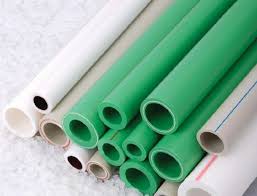Nov . 27, 2024 05:30 Back to list
PPR Pipe Manufacturing for Efficient Water Supply Solutions
Understanding PPR Pipes for Water Supply A Guide for Manufacturers
In the ever-evolving landscape of plumbing and water supply systems, PPR (Polypropylene Random Copolymer) pipes have emerged as a leading choice for both manufacturers and consumers. Known for their durability, light weight, and resistance to corrosion, PPR pipes are widely used in residential, commercial, and industrial water supply applications. This article provides a comprehensive overview of PPR pipes, their manufacturing process, benefits, and market considerations.
What are PPR Pipes?
PPR pipes are made from a thermoplastic polymer that possesses unique properties making them suitable for various plumbing applications. These pipes are characterized by their ability to withstand high temperatures and pressures, making them ideal for hot and cold water supply systems. They are available in various diameters and can be easily formed into different configurations to accommodate the specific needs of plumbing layouts.
Manufacturing Process
The production of PPR pipes involves several critical steps, ensuring a high-quality final product. The process begins with the selection of raw materials—polypropylene granules—which are extruded into the desired pipe shape. During the extrusion process, additives such as stabilizers and colorants may be included to enhance the pipe's performance and aesthetics.
After extrusion, the pipes undergo cooling and cutting to the required lengths. Quality control is crucial at this stage, where the pipes are subjected to tests such as pressure tests, impact resistance checks, and dimensional tolerance evaluations to ensure they meet industry standards.
Manufacturers may also adopt additional processes such as co-extrusion to produce multi-layer pipes that offer superior strength and insulation capabilities. These advanced manufacturing techniques help create more efficient and reliable products, catering to a diverse market.
Benefits of PPR Pipes
1. Durability PPR pipes are highly resistant to corrosion and scaling, ensuring a long lifespan. Unlike metal pipes, they do not rust or corrode, which means they maintain their structural integrity and performance over time.
2. Lightweight and Easy to Install The lightweight nature of PPR pipes makes them easy to handle and install. This reduces labor costs and installation times, making them a preferred choice for contractors and plumbers.
ppr pipe for water supply manufacturers

3. Energy Efficiency PPR pipes offer excellent thermal insulation properties, reducing heat loss in hot water supply systems. This energy efficiency translates into lower energy bills for consumers.
4. Chemical Resistance PPR pipes can resist a wide range of chemicals commonly found in water supply systems, increasing their versatility for various applications.
5. Cost-Effectiveness Though initial costs may be higher than some alternatives, the long-term savings from reduced maintenance and replacement needs make PPR pipes a cost-effective solution for water supply systems.
Market Considerations
As the demand for efficient water supply systems increases globally, manufacturers of PPR pipes must navigate several market considerations to remain competitive
- Quality Standards Compliance with international quality standards, such as ISO and ASTM, is essential for manufacturers. Ensuring that products meet these standards not only guarantees performance but also builds trust with consumers.
- Sustainability With growing concerns over environmental issues, manufacturers are increasingly turning towards sustainable practices. This includes using recycled materials and ensuring the recyclability of their products.
- Innovation Responding to technological advancements and changing consumer needs, manufacturers should invest in research and development to introduce innovative products, such as smart piping solutions that monitor water flow and detect leaks.
- Market Trends Staying updated with market trends, such as the shift towards eco-friendly building materials and smart water management systems, will help manufacturers align their products with consumer expectations.
Conclusion
PPR pipes are undoubtedly a vital component of modern water supply systems, offering numerous advantages over traditional piping materials. For manufacturers, understanding the intricacies of PPR pipe production, maintaining high-quality standards, and innovating in product design are essential for success in a competitive market. As global demand for reliable and efficient water supply solutions continues to rise, the role of PPR pipes and their manufacturers will be increasingly significant in shaping the future of plumbing and water management.
-
High-Quality PVC Borehole Pipes Durable & Versatile Pipe Solutions
NewsJul.08,2025
-
High-Quality PVC Perforated Pipes for Efficient Drainage Leading Manufacturers & Factories
NewsJul.08,2025
-
High-Quality PVC Borehole Pipes Durable Pipe Solutions by Leading Manufacturer
NewsJul.08,2025
-
High-Quality PVC Borehole Pipes Reliable PVC Pipe Manufacturer Solutions
NewsJul.07,2025
-
High-Quality UPVC Drain Pipes Durable HDPE & Drain Pipe Solutions
NewsJul.07,2025
-
High-Quality Conduit Pipes & HDPE Conduit Fittings Manufacturer Reliable Factory Supply
NewsJul.06,2025

